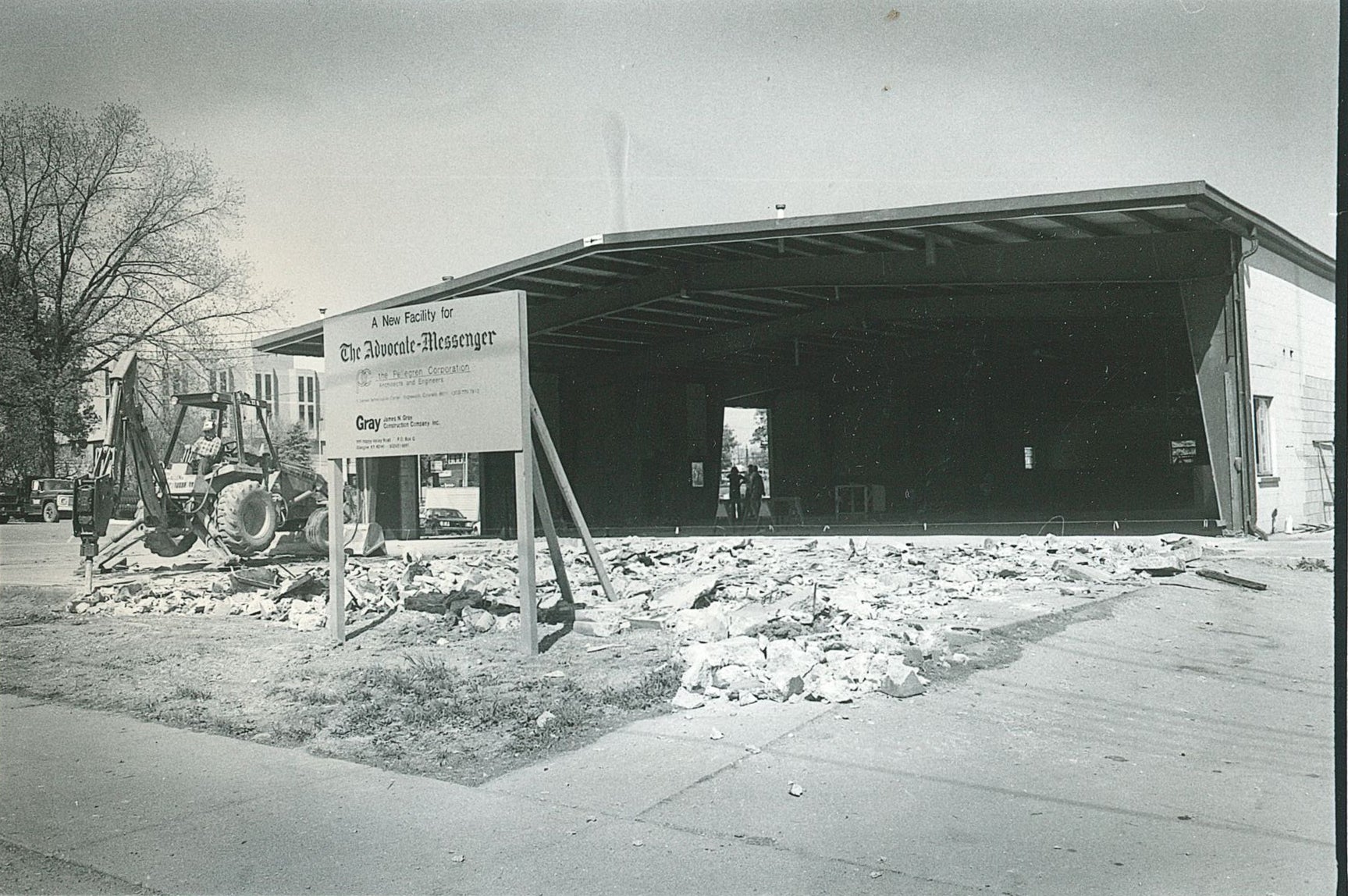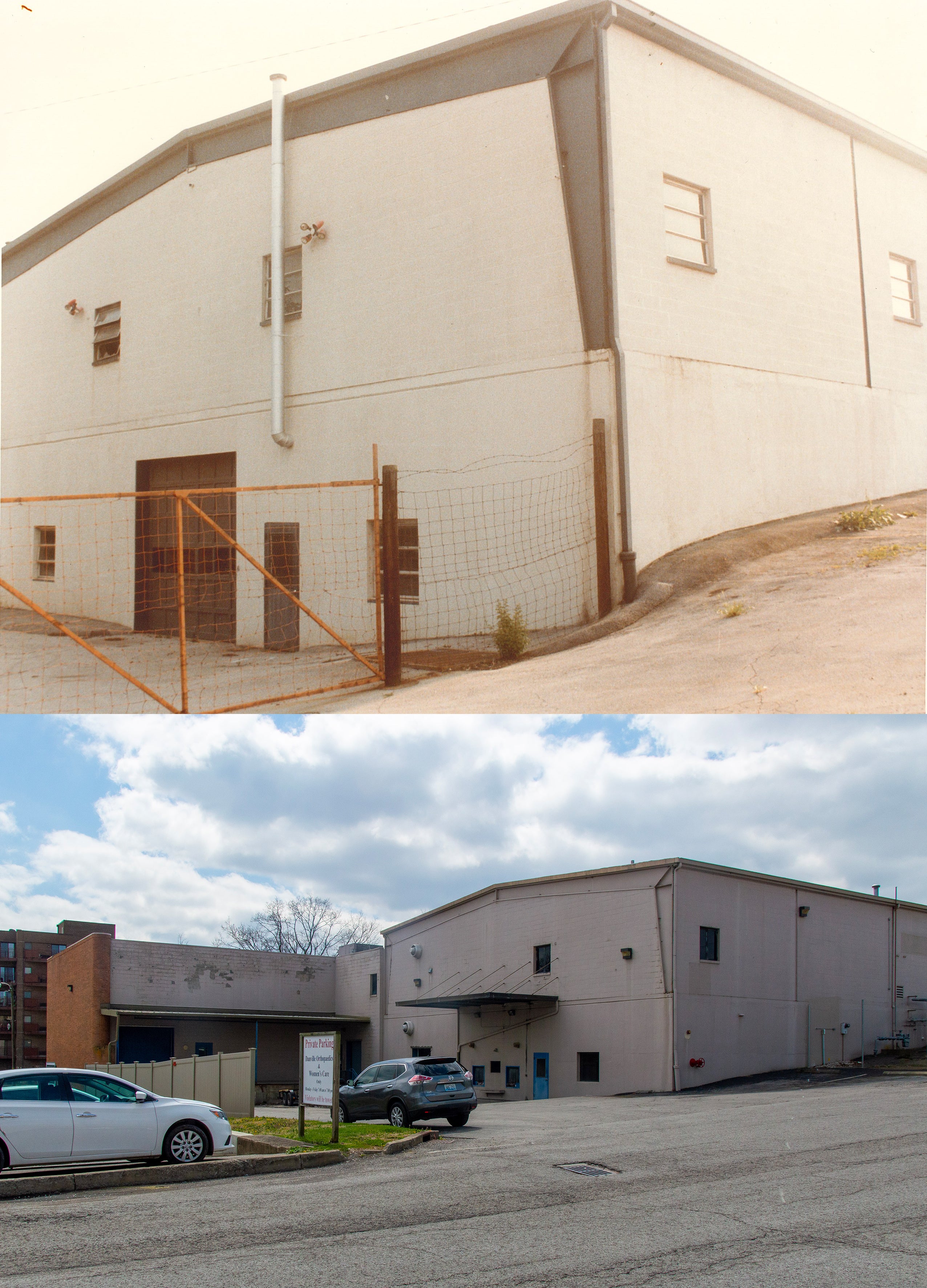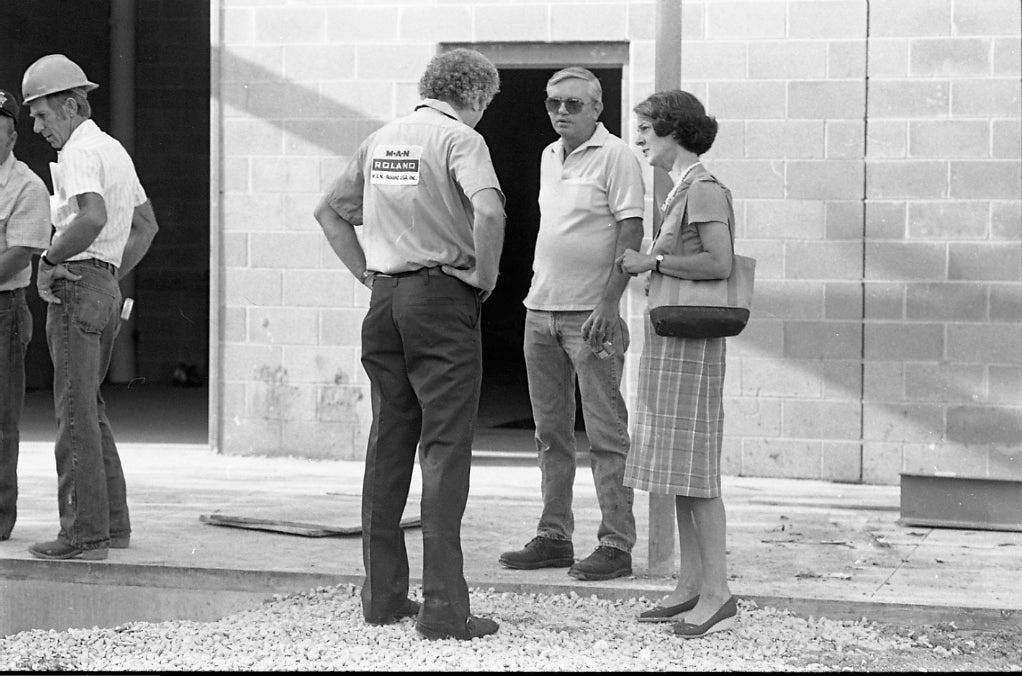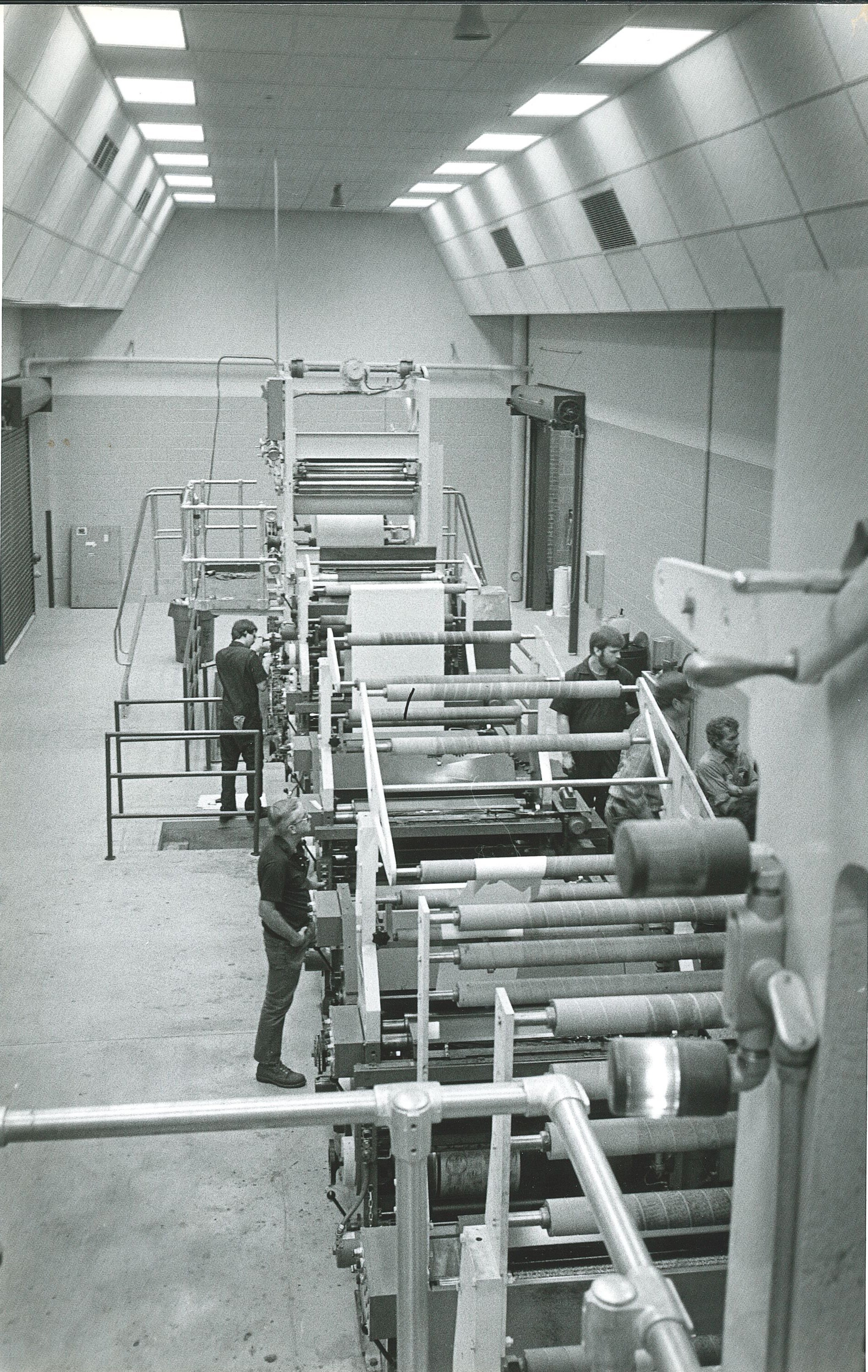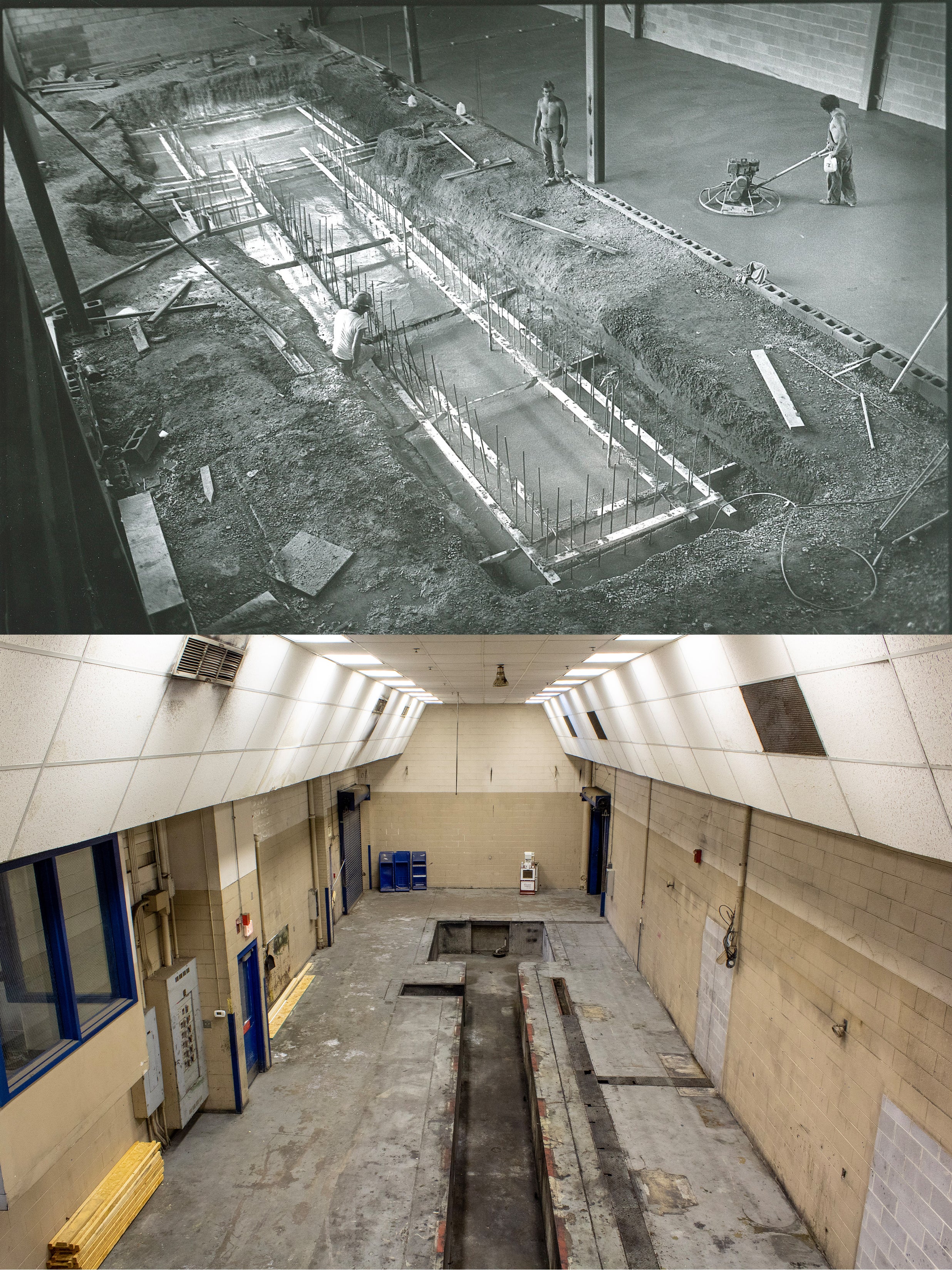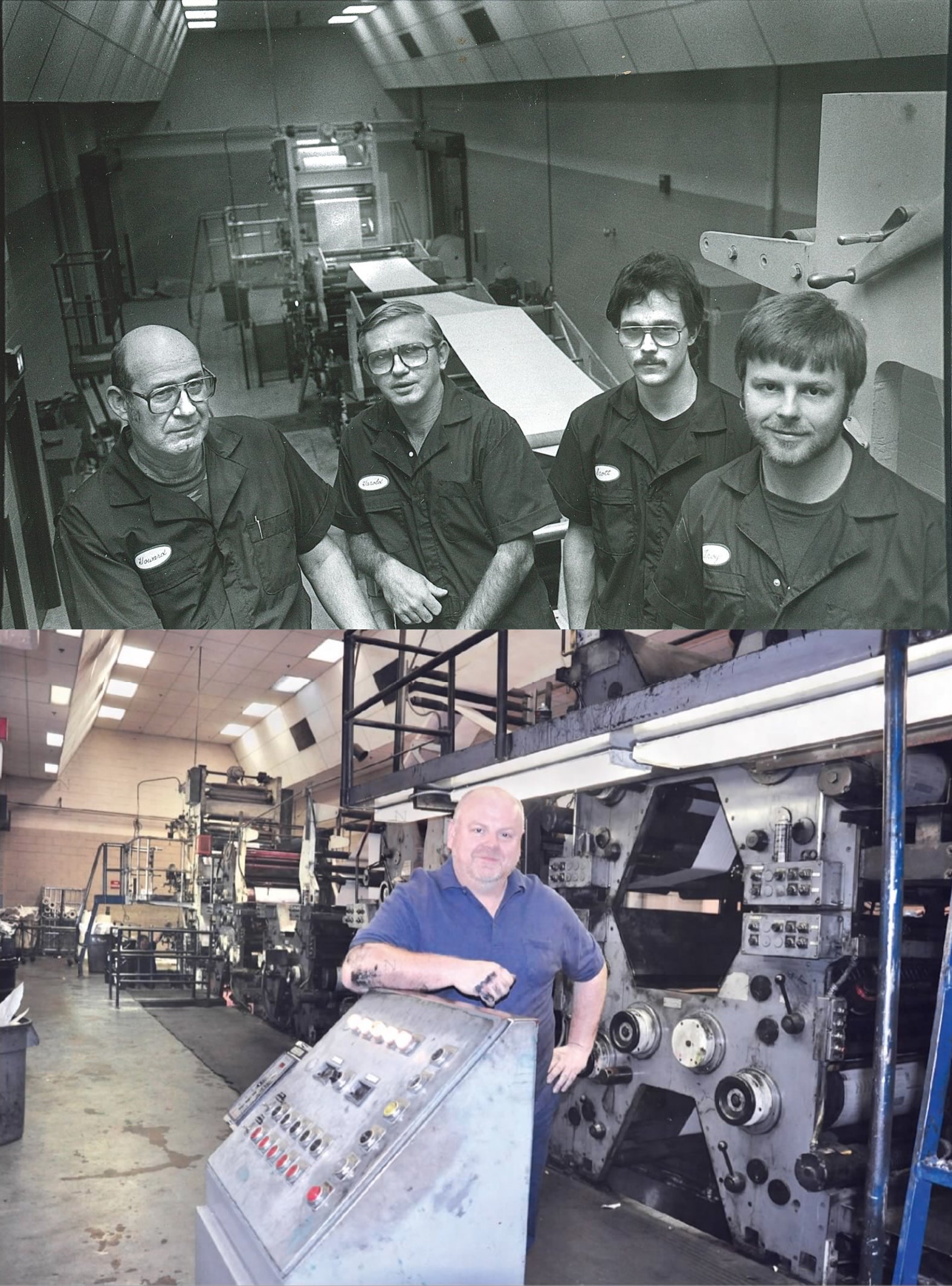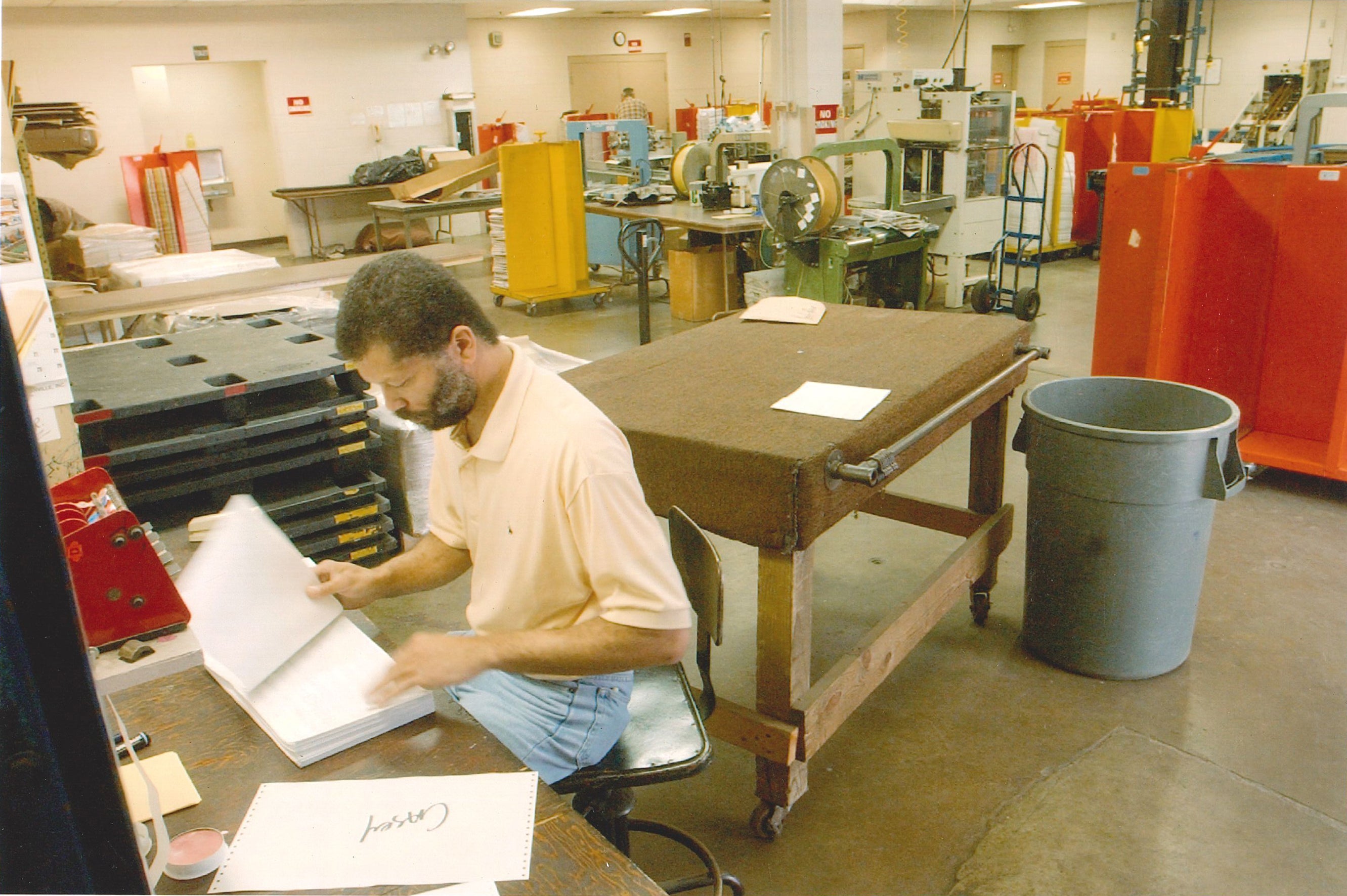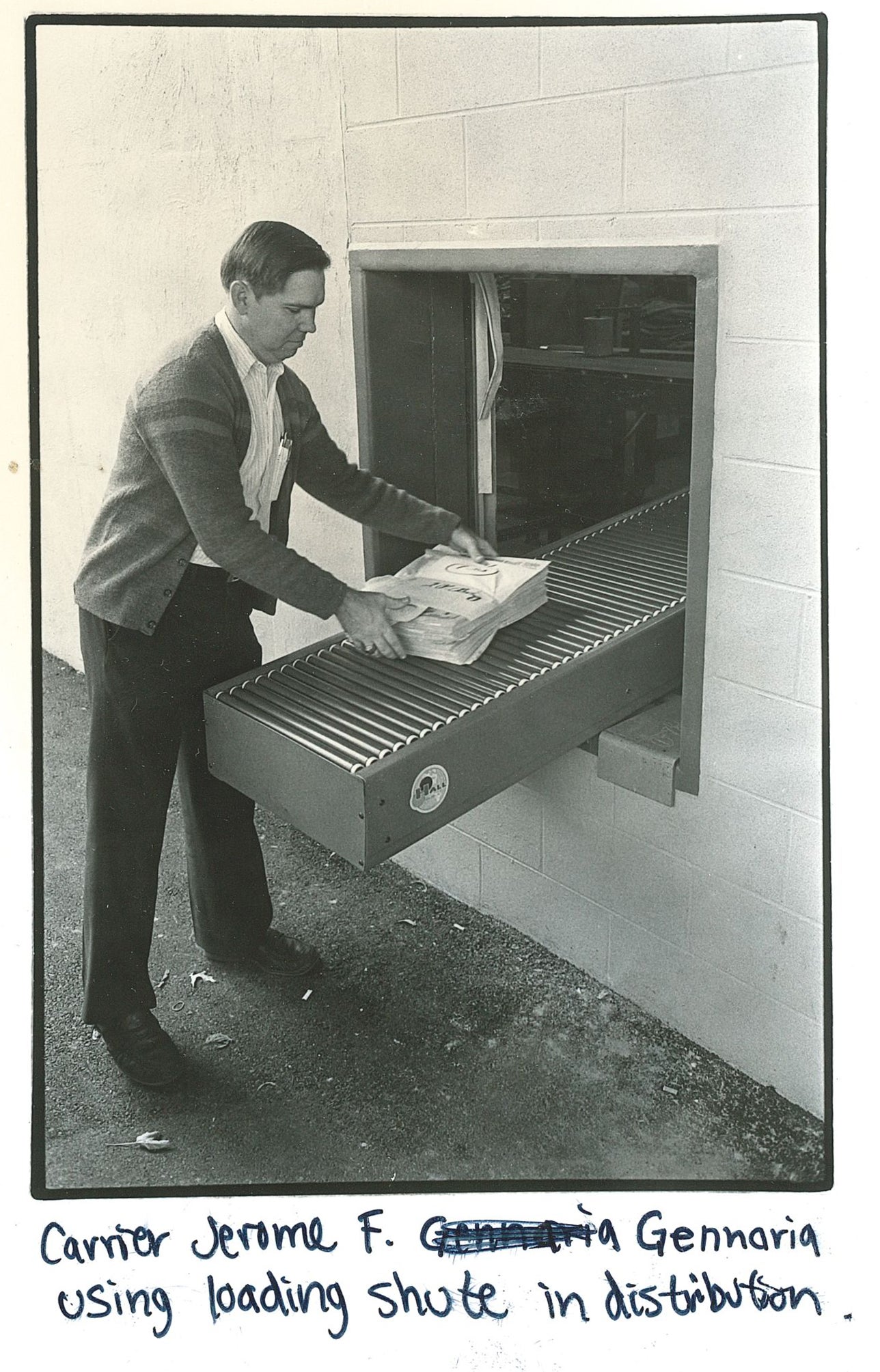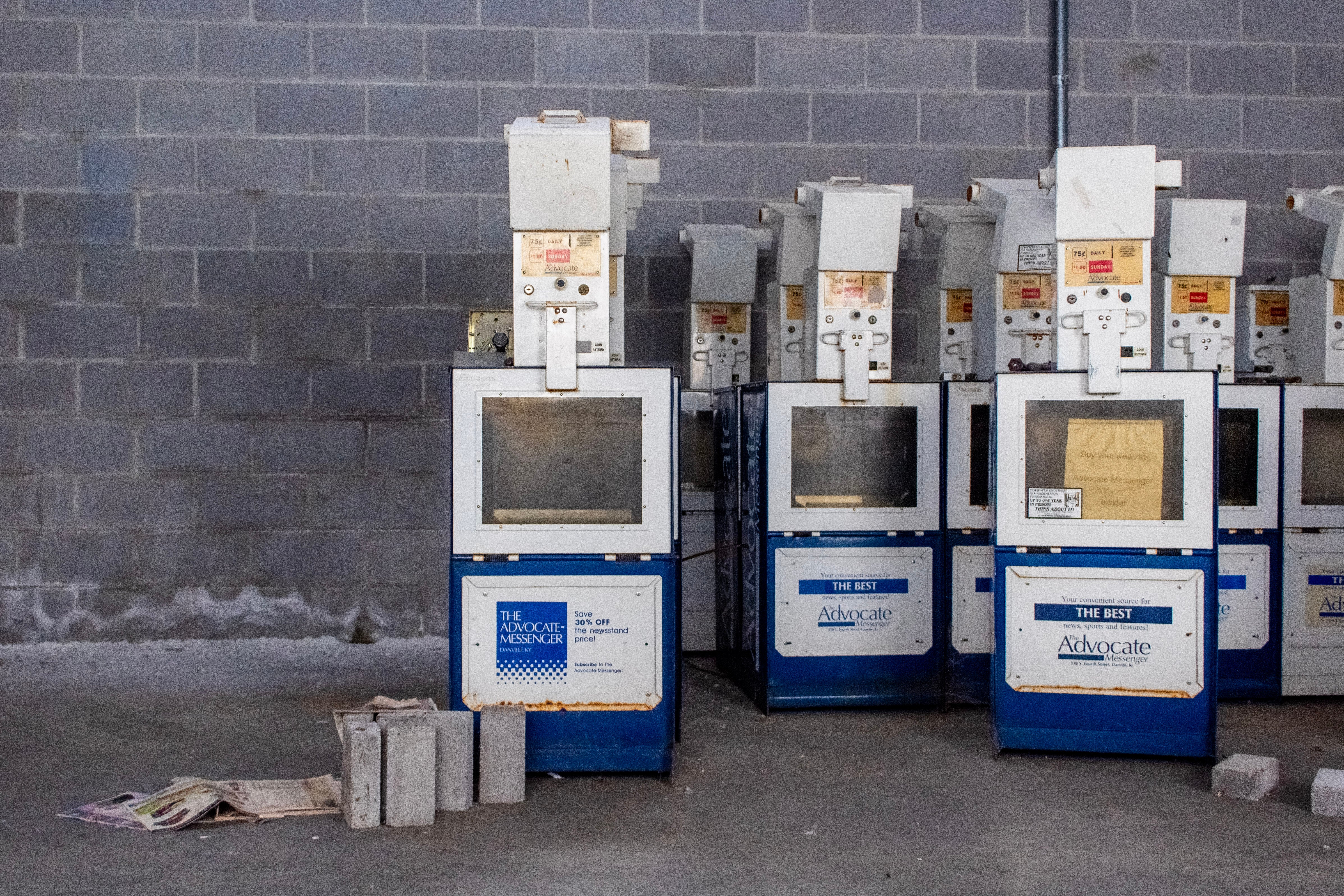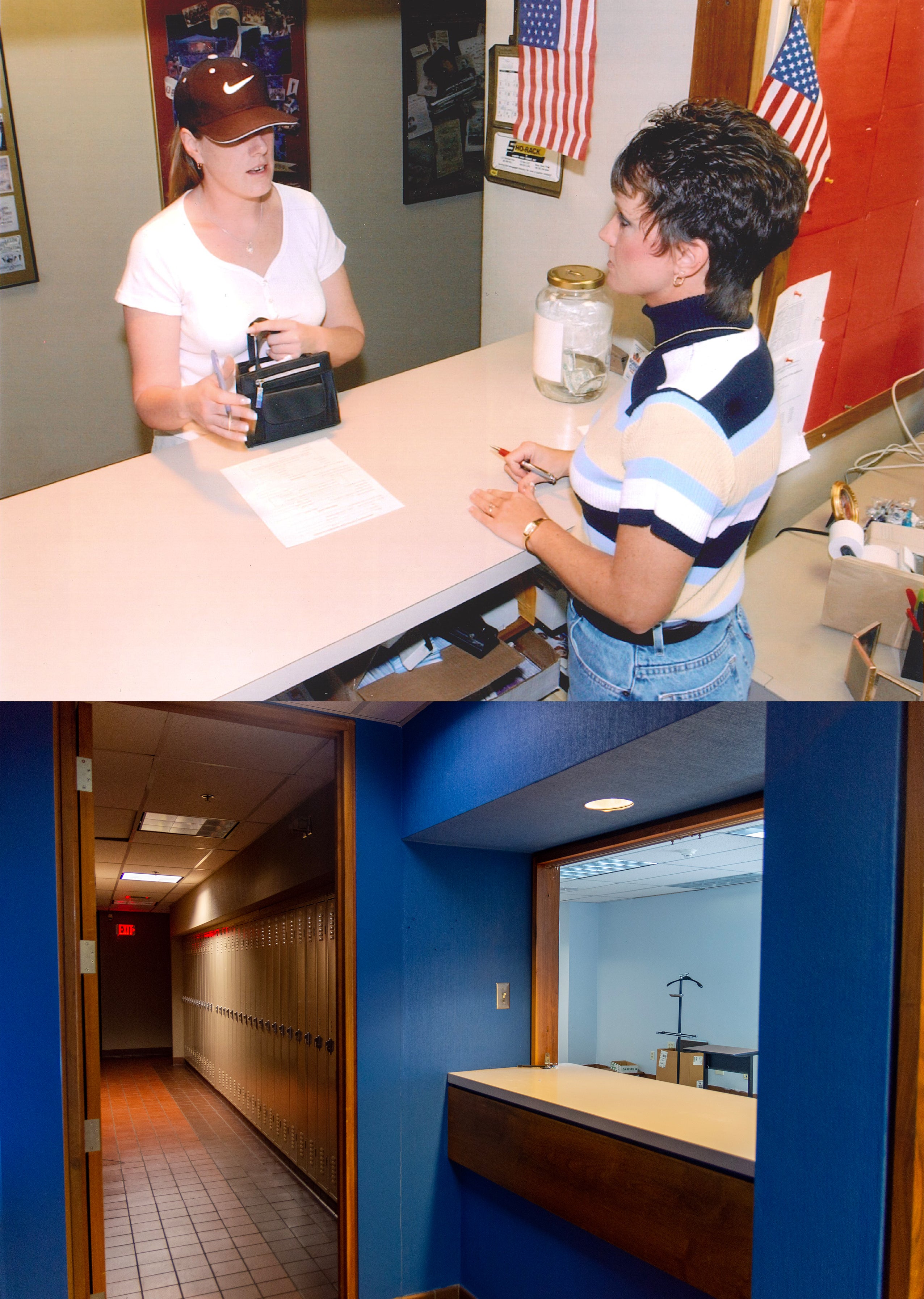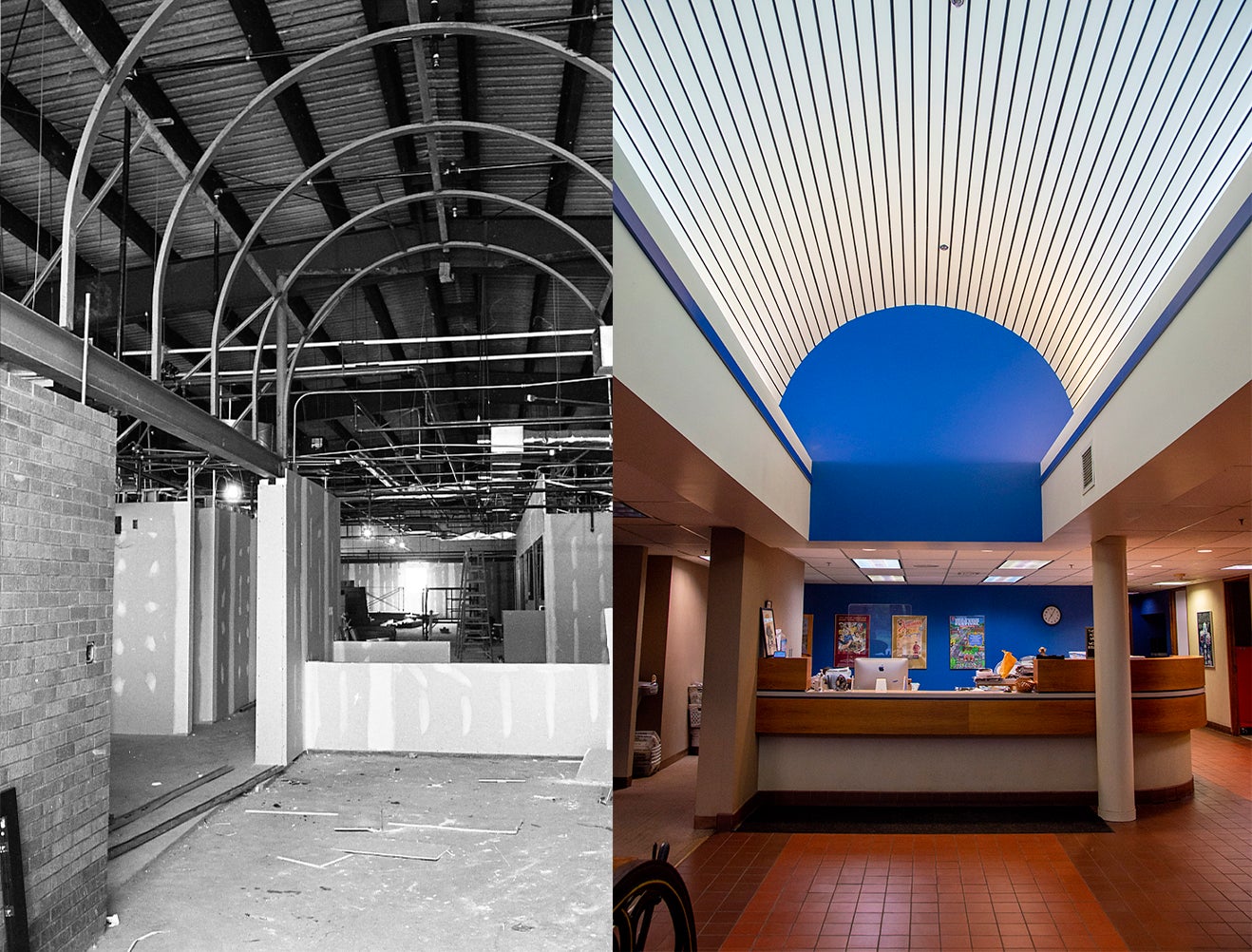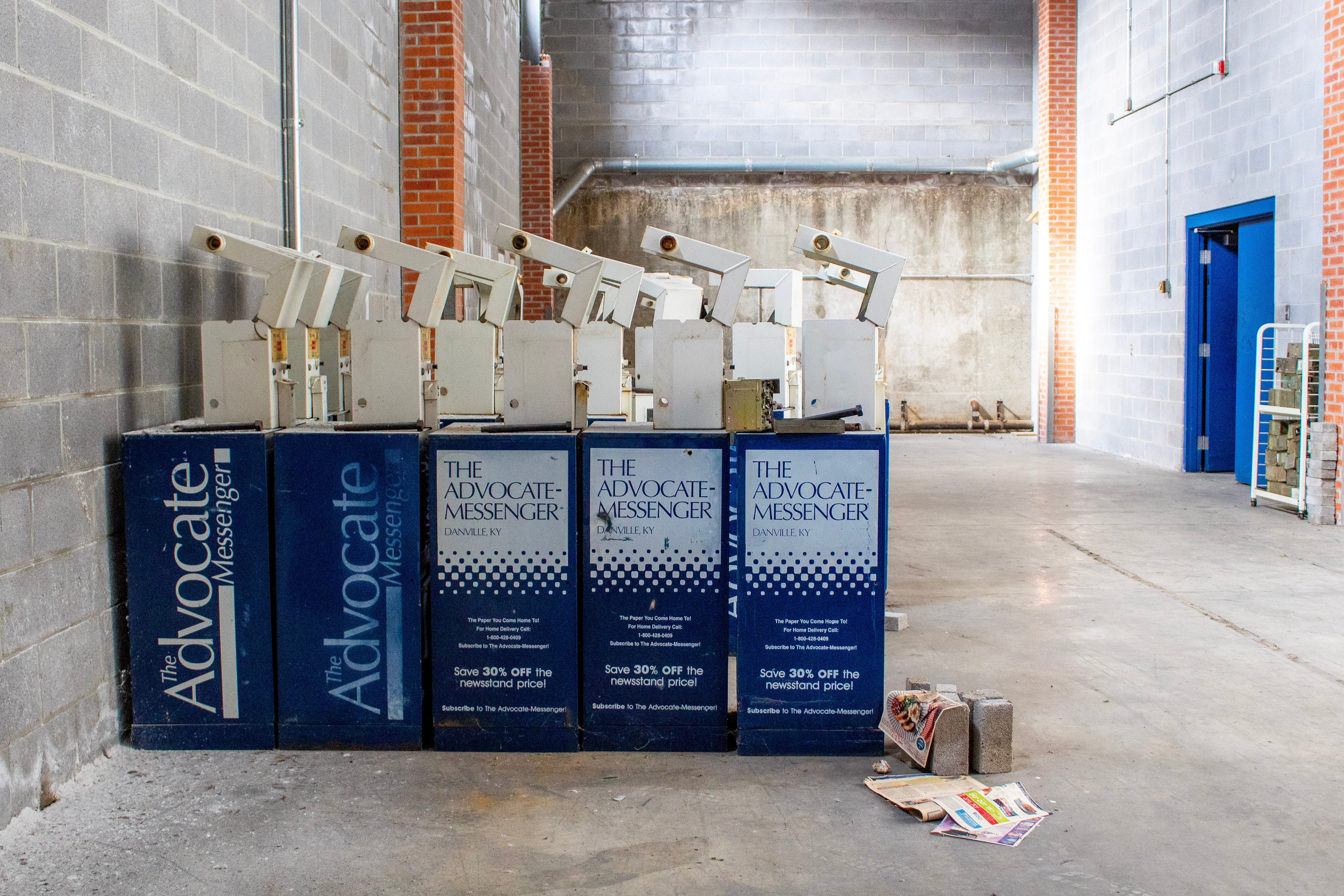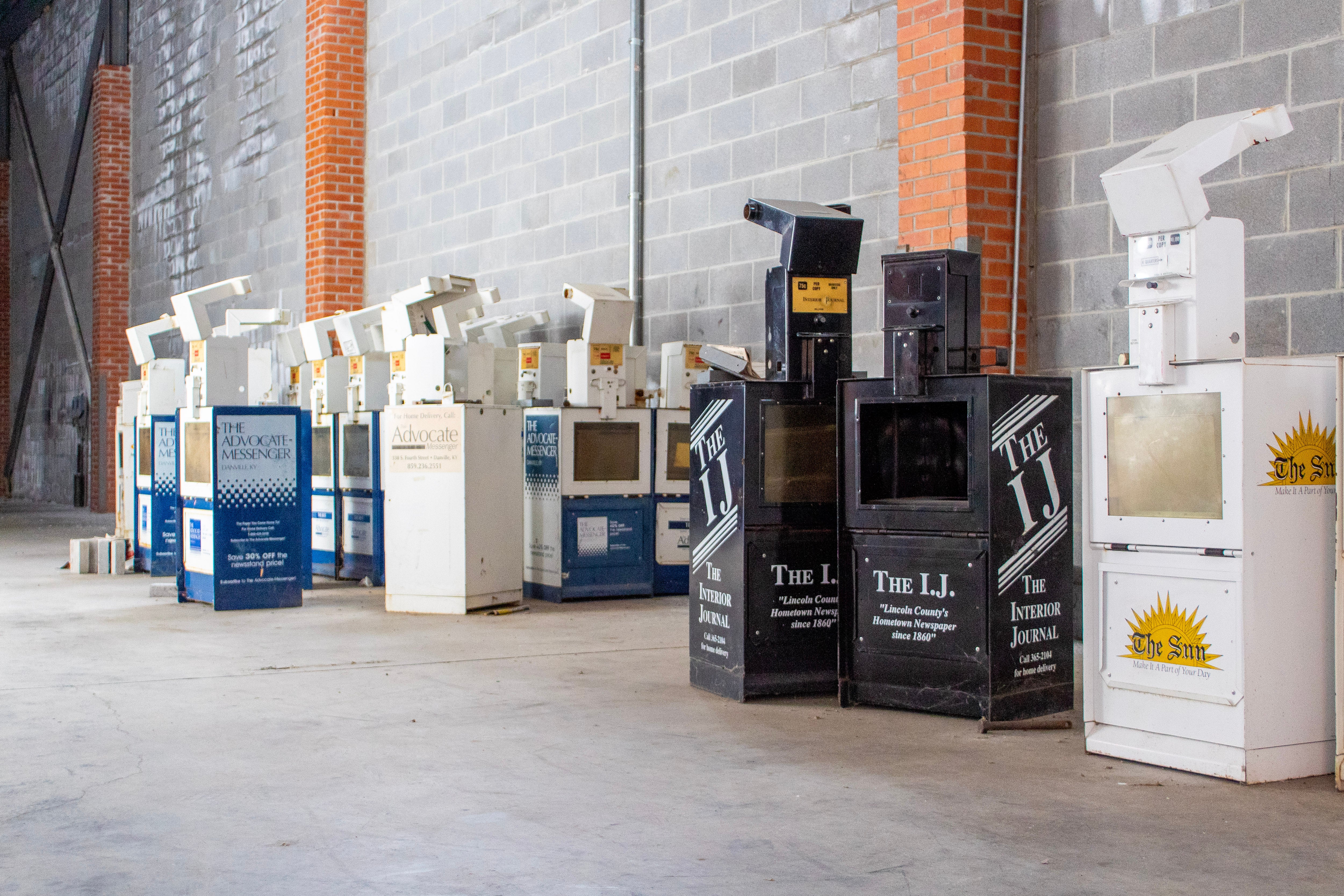End of an era: Advocate-Messenger in the Fourth Street building; Newspaper history 1985 to now
Published 1:17 pm Thursday, April 14, 2022
The Advocate-Messenger moved out of the building at 330 S. Fourth Street on April 1, the same building it had been in since 1985. The building housed the printing press until 2013, and had a large staff until the newspaper industry went into decline in the 2000s and 2010s. With a smaller staff, the paper moved to its current home at 461 S. Fourth Street building B, which can be located by turning on Dillehay Street and going to the first parking lot on the left. The following article is a tribute to the newspaper’s time in the building.
When the Advocate-Messenger moved into its new building at 330 S. Fourth Street in 1985, it was a major upgrade from the previous home.
One article in the November 15, 1985 issue, which introduces readers to the new building, is titled “Employees take quick look back at old Advocate building.” The article tells of the newspaper’s old building having a leaky roof, a broken darkroom door, cramped spaces and other problems. The building, located on the corner of Walnut and Fourth, was torn down to be a parking lot for Ephraim McDowell hospital.
Retired reporter Brenda Edwards, who started at the Advocate-Messenger in 1965, remembers working in the old building. She worked for the newspaper full time until she retired in 2007.
“We were all excited to get more space; we weren’t as close because we were crowded up there,” Edwards said about moving to the new building.
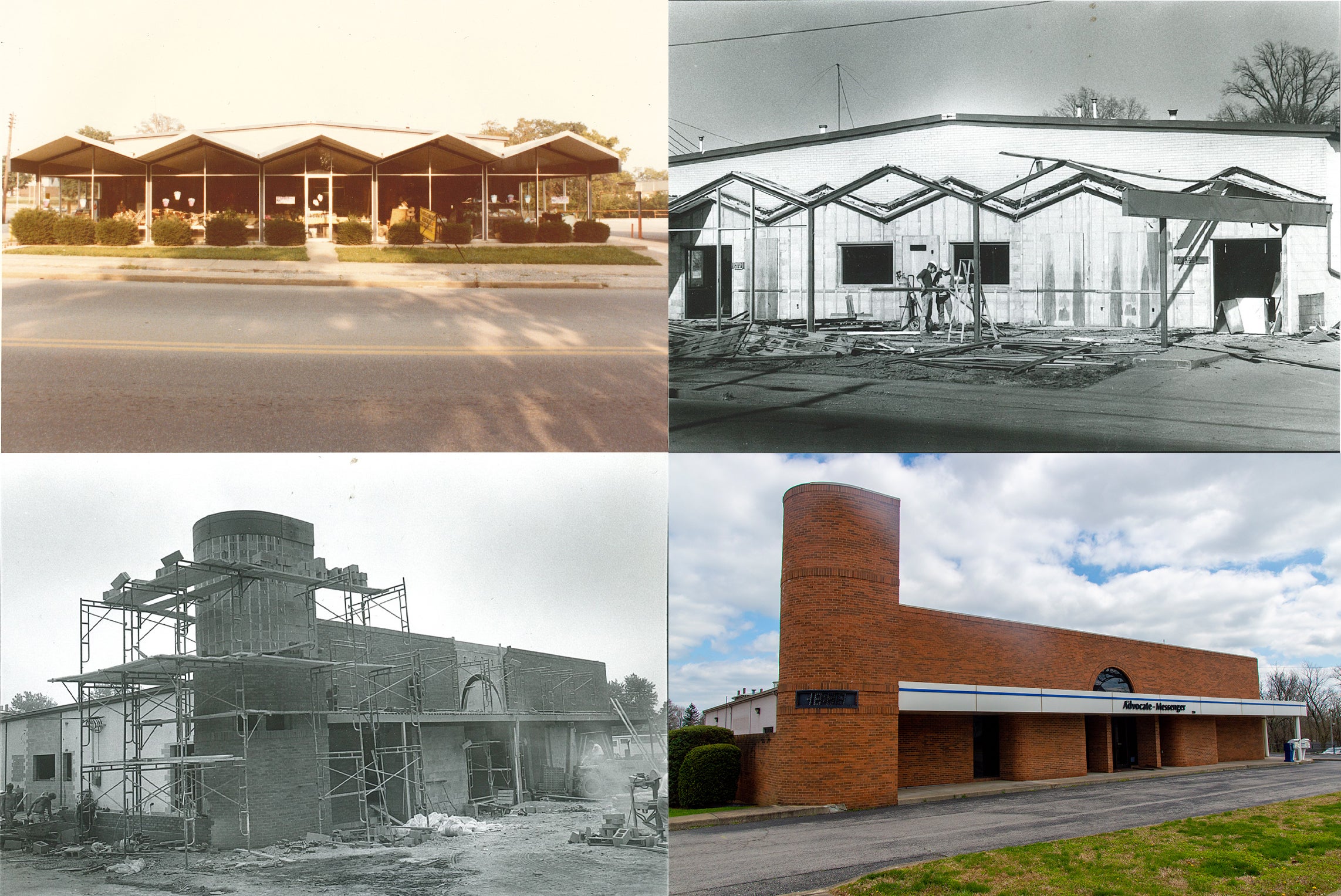
Before the Advocate-Messenger moved into the 330 S. Fourth Street building, it was home to Mattingly-Rapier Chevrolet Company. The top left photo shows the building before renovations. Workers began renovations in March 1985. Top right: Workers removed the zig zag roof of the front section. They added the brick front, as seen in the bottom photos. They kept the back section of the original building, and added on the press room and other rooms on the right side.
The building’s history
The 330 S. Fourth Street building had been home to Mattingly-Rapier Chevrolet Company. The Advocate completely renovated the space, replacing the front section with a large brick entrance. They kept and re-did the back warehouse section of the building, and added on the press room and break room on the right side.
When the building opened, it was humming with activity in every room. Walking through the front door, people were greeted by a receptionist to the right. If they needed to pay their bills, they could walk over to the circulation office, which was further down on the right.
The publisher’s office was to the left of the front door, and a conference room was next to it. In front of the entrance was the cashier and classified line ads department. Behind it was the newsroom, which spanned almost the whole length of the building.
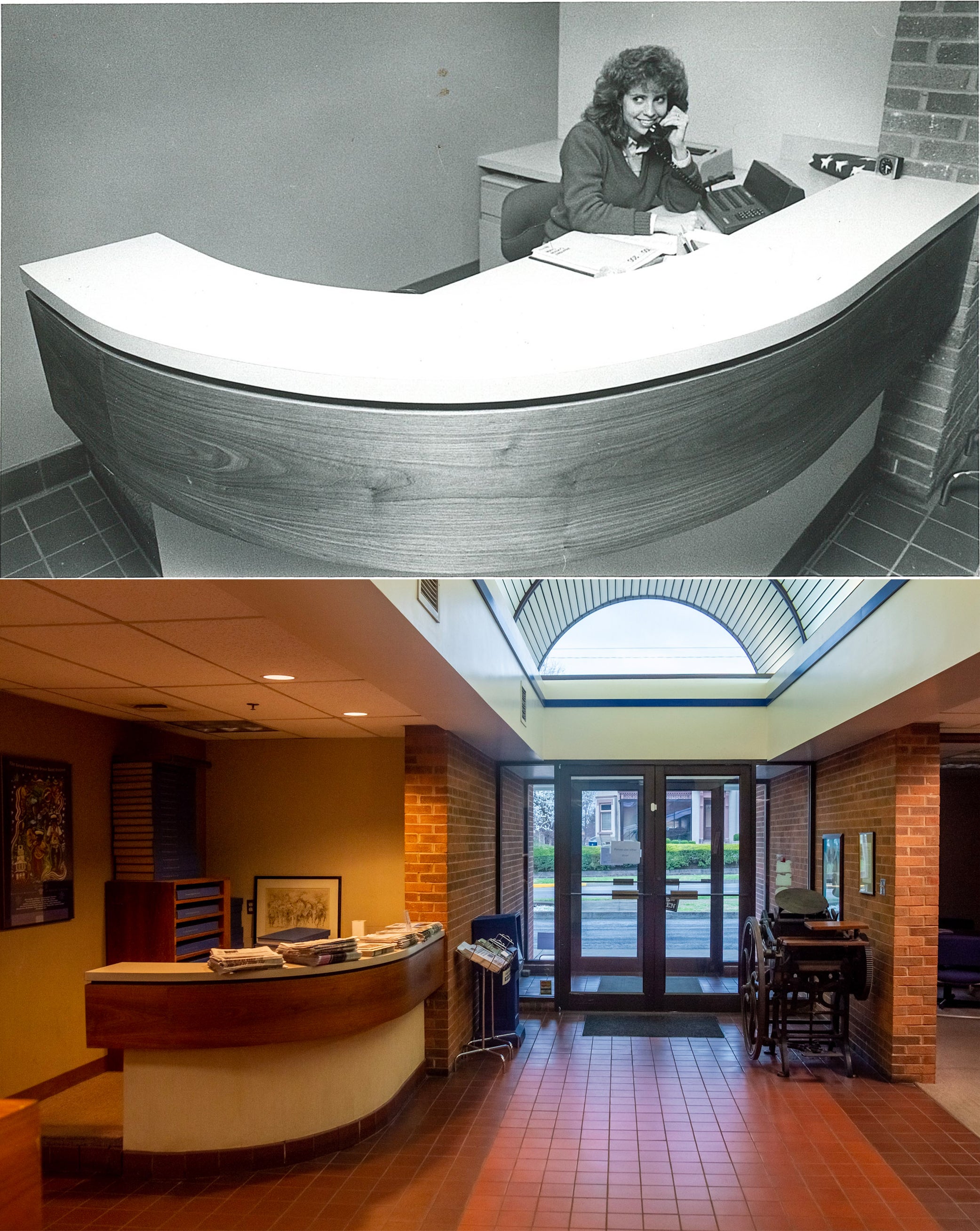
Top: Receptionist Lisa Cunningham greeted customers as they walked in to the front desk in 1985. Bottom: The old receptionist area later housed the Advocate-Messenger’s large blue books of old newspapers.
Reporters in 1985 worked in cubicles on Mycro-Tek computers, which were new technology at the time. When they finished stories, reporters sent them to the composition team, which was housed at the back of the newsroom. Advertising designers also put together compositions in this space, which were made by hand on big sheets of graph paper. The advertising director had an office at the back.
Robin Hart, who worked at the newspaper in various ways from the 1980s until 2021, said the newsroom was always busy.
“You could hear the clicking of computer keys, the phones were ringing, and there was the darkroom where we processed black and white film,” Hart said.
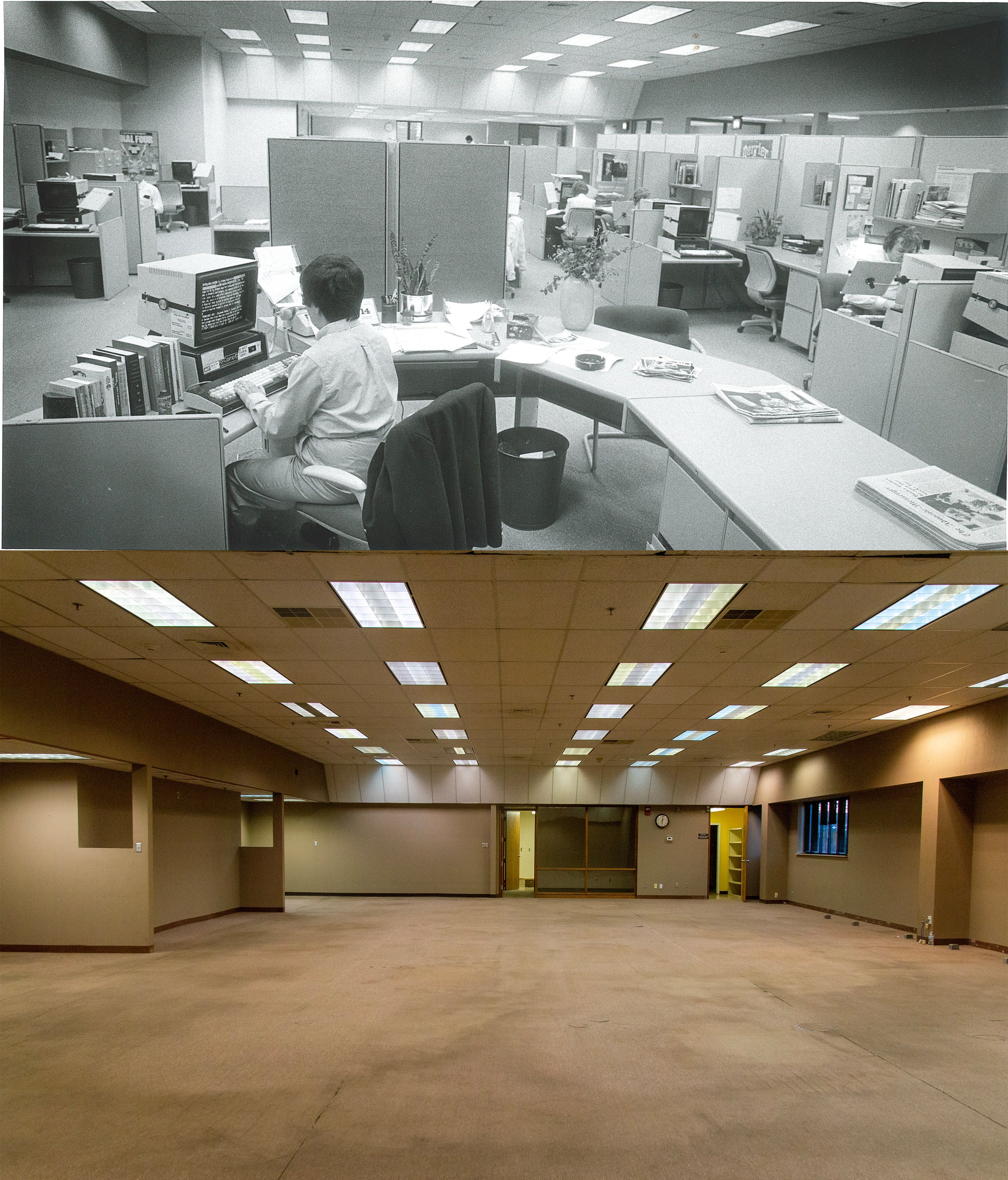
Top: The newsroom in 1985 housed the reporters, page and adverdising designers. The news staff worked in cubicles on computers of the time period. Bottom: The news editor’s office was at the back of the room. Next to it on the right was a small darkroom, conveniently located for photographers to get photos ready to hand off to designers. By the mid-2010s, reporters no longer used this room, and a small church used the space until 2022.
Photographers worked in a small darkroom, which was at the front of the newsroom next to the managing editor’s office. Hart said they had to process film as quickly as possible, and usually had to pick photos for copy without seeing them in print first; they would pick photos just by looking at the negatives, due to a tight timeline.
“It was nerve-racking to make sure it all got done in time, but it was exciting and fun,” Hart said. “It was very, very busy; both parking lots were full with employees.”
In addition to some writing and photographing, Hart also helped with the plates for the printing press. Behind the composition section of the newsroom at the back of the building, workers prepared printing plates, which are thin, flat sheets of metal that contain the final page design to print.
Press workers would get the plates, then go downstairs to start the printing press. The massive press was housed in a large warehouse section of the building, and it took three or four full time employees to operate it. Walking down the stairs, people could see the press through an observation window.
“When [the press] started cranking up, it started real slow; it sounded like an airplane getting ready to take off, you could smell the ink, you could see the papers rolling off the presses, they’d fold it, and the pressmen were experts,” Hart said.
The paper had another smaller press in a room behind the main press, which was used for brochures and pamphlets. The Advocate’s press printed other newspapers in the area as well.
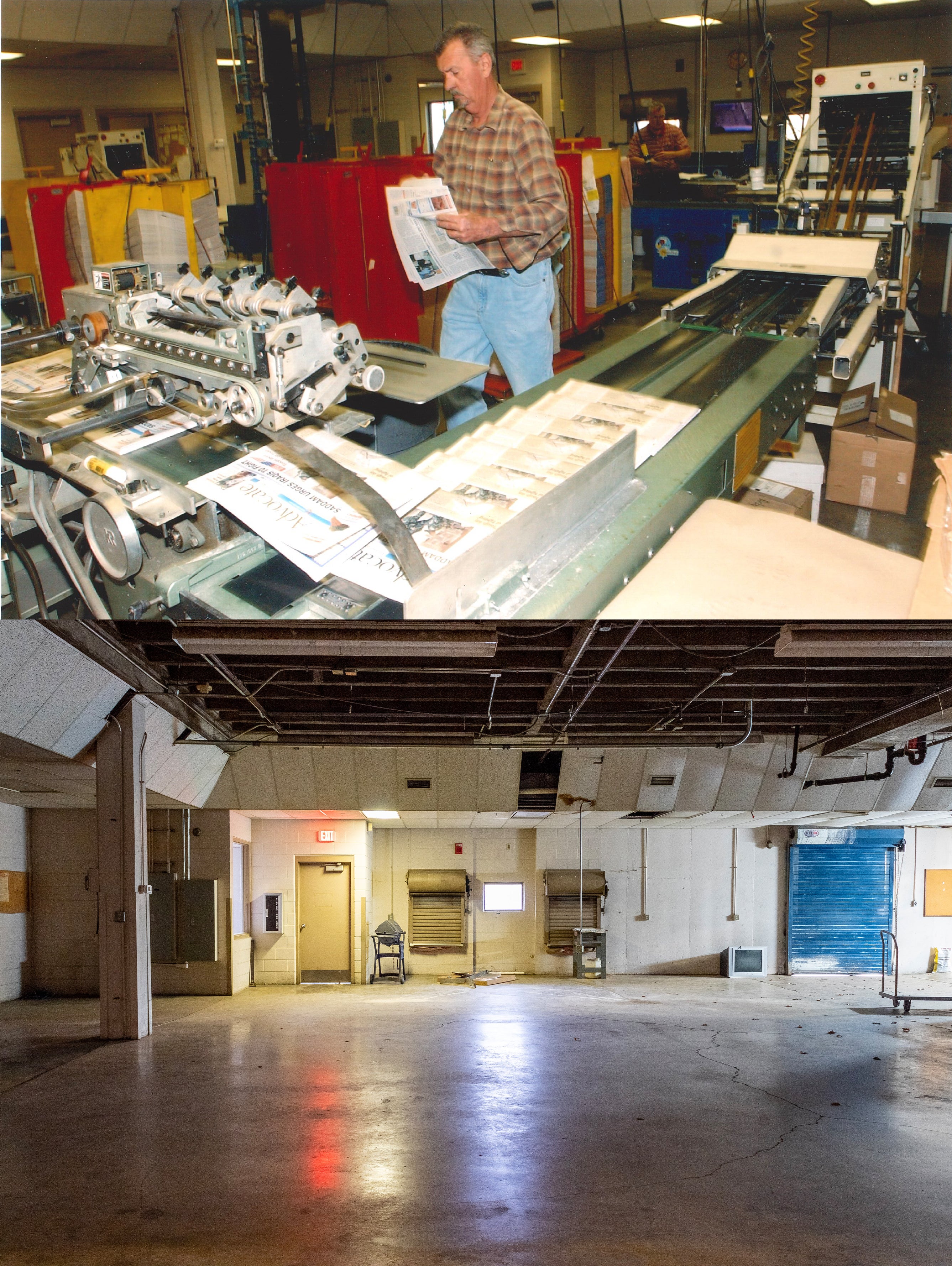
Top: The distribution room was where workers and machines bundled papers together and handed them to delivery drivers through slots in the wall. Bottom: The room became empty when the printing press was removed in 2013.
Once papers were ready, they went to the mail room, which was left of the stairs. The room had a conveyor belt and workers put the inserts in by hand. Outside, newspaper carriers lined up for their deliveries. They would take the papers through roller slots.
“[The mail room] was just humming with people, the radio going, machines, and you could hear the rumbling of the press in the other room, then all of a sudden it would get quiet when everything was out,” Hart explained.
The printing press was taken out in 2013 and dismantled, leaving a big hole in the floor where it once stood. It was removed in an effort to be more efficient and cut costs. The Advocate-Messenger was then printed at the Winchester Sun location, which is another newspaper in the Bluegrass Newsmedia company.
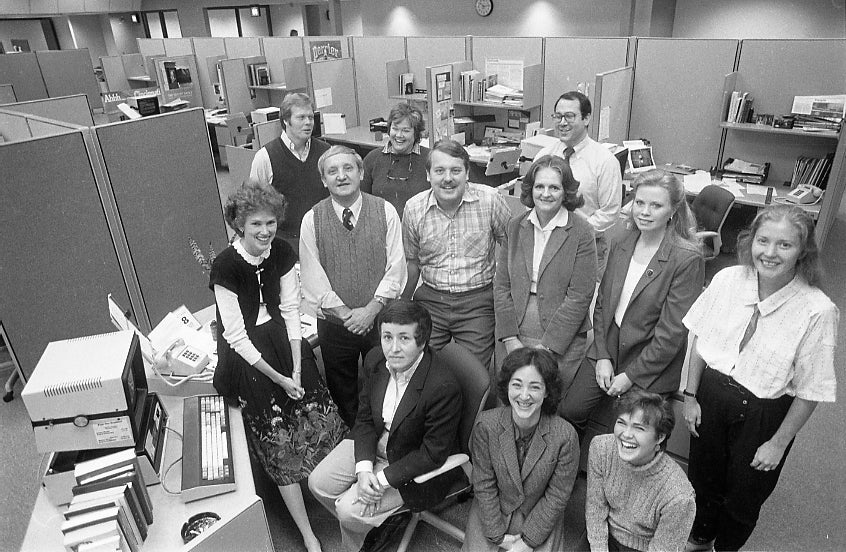
The news staff in 1985 in their new space
The staff’s history
When the Advocate moved to the building in 1985, Edwards said they added many jobs to account for more work with the press, more pages to fill, and more coverage area. The paper covered five surrounding counties, and each county was assigned a reporter to cover news that would also be relevant to Boyle County.
Edwards spent time covering Lincoln County, then Casey County. She also wrote the history column for many years, which was usually the most popular column.
The managing editor John Davis started in 1979 and continued in that position until 1997. He then became editorial page and business editor, and retired in 2006.
John Nelson took his place as managing editor in 1997. Nelson had run a weekly newspaper in Somerset that printed at the Advocate. He was hired as copy editor at the Advocate, then six months later, took over for Davis.
The paper’s publisher from 1977 until 2006 was Mary Schurz, whose family business Schurz Communications owned the Advocate and other newspapers.
“Mary was great, she hired people in whom she had confidence,” Nelson said. “She always told me, ‘don’t bring me your problems, bring me your solutions.’”
Nelson continued, “She was a very quiet person, but you knew that she had something to say when she was walking down the hall; she’d have her glasses down on the end of her nose, a red pen in her hand, and the newspaper folded up in her other hand, so you knew she was about to point something out to you that was wrong. But she was very kind, she considered her staff like family.”
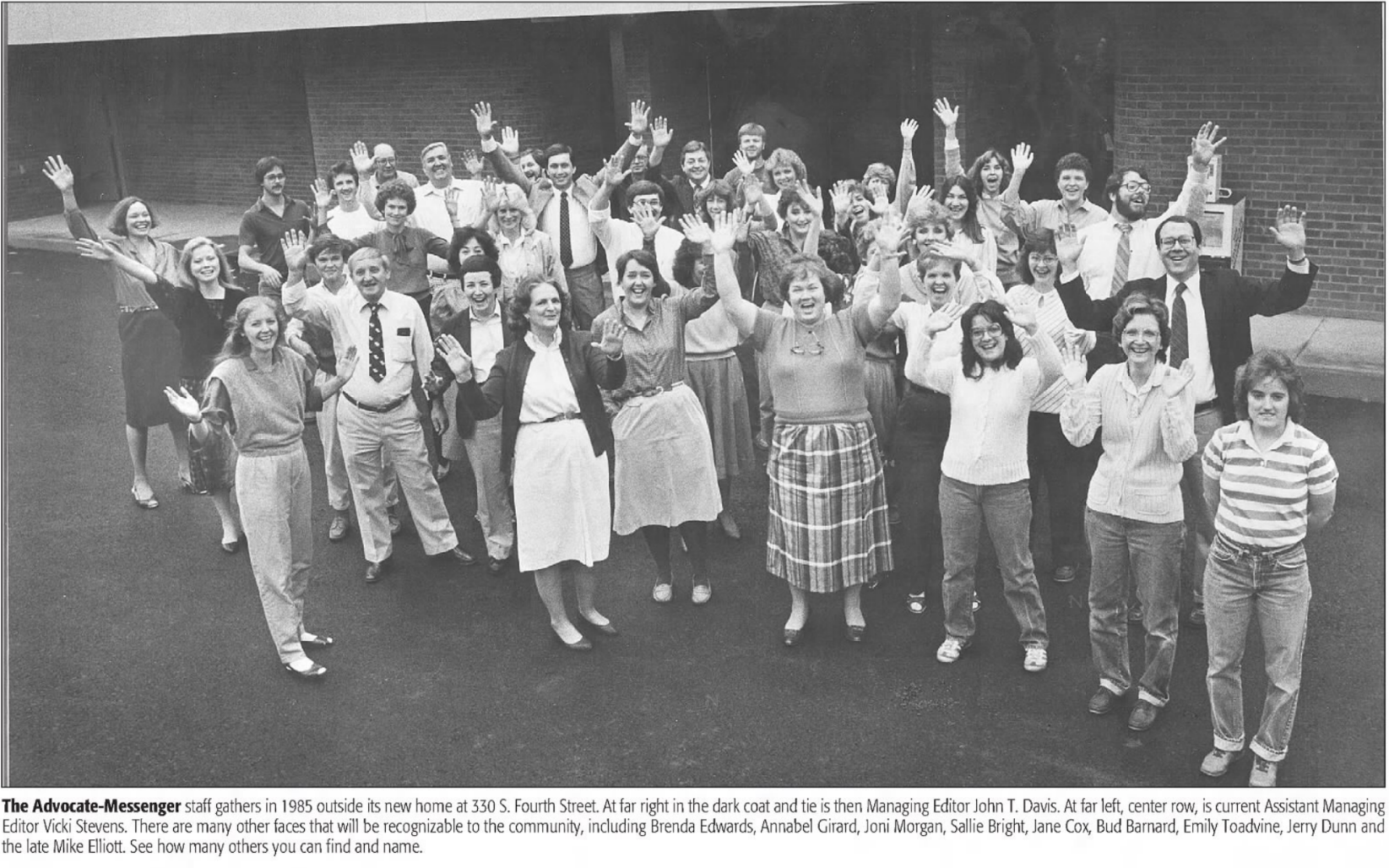
Advocate-Messenger staff in 1985 are excited about moving into their new building at 330 S. Fourth Street.
The newspaper went strong under Mary’s leadership through the 1990s and early 2000s, until the accessibility of the internet and new technology became widely available. The newspaper industry went into decline as a result, and the Advocate-Messenger started scaling back.
The newspaper gradually slowed down coverage of surrounding counties, and by the mid-2010s, only focused on Boyle County. New technology eliminated the need for some positions, and advertising declined due to the internet.
“I had the best staff in the world; things got really hectic because we had more to do with fewer people, and people got worried,” Nelson said. “But we never missed a day of publication.”
When Mary retired in 2006, her nephew Scott Schurz took over as publisher. He had been assistant publisher, and continued as publisher until 2014.
Larry Hensley became publisher from 2014 to 2018. Hensley had served as CFO and general manager of another Schurz organization.
In early 2016, Schurz Communications sold the Advocate-Messenger, The Winchester Sun, The Jessamine Journal and The Interior Journal to Bluegrass Newsmedia. The company also owns The Harlan Enterprise, The Claiborne Progress, and The Middlesboro News.
Nelson also retired in 2016, at which time he said the staff had dwindled to half of what it was in 1997. He said the newspaper had about 10 to 12 staff in 2016.
Ben Kleppinger took over as managing editor from 2016 to 2020. Kleppinger started as a reporter in 2009, and during his editor tenure, started the Danville Living Magazine, which has since been discontinued.
Mike Caldwell was named interim publisher in 2018, and continued until Kevin Smith became publisher in September 2020. Smith has previous experience in overseeing newspapers, including for Boone Newspapers, the same group that owns The Advocate-Messenger.
Jeff Moreland became regional editor in March 2020. The current regional editor’s position oversees Bluegrass Newsmedia’s seven newspapers. The position is based in Danville with an associate editor in Winchester.
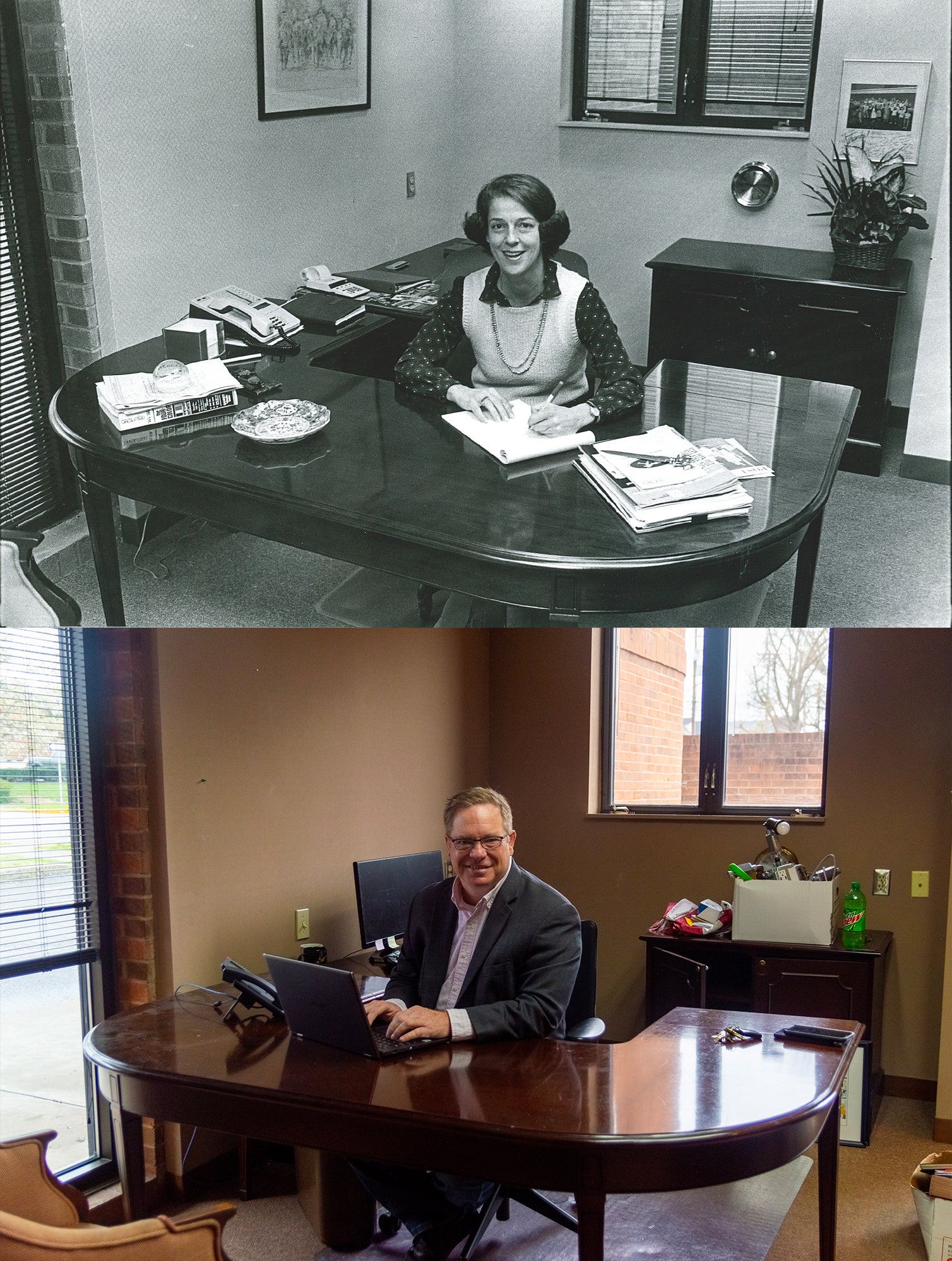
The publisher’s office, top photo: publisher Mary Shurz when the newspaper first moved into the building in 1985. Bottom photo: current publisher Kevin Smith used the same office with the same furniture and layout.
The technology history
The Advocate started using computers soon after they were available in the late 70s and early 80s. Reporters typed stories on Mycro-Tek computers in the new building at the time, and eventually moved to using Mac desktops and laptops.
Photographers stopped using the darkroom in the early 2000s. Digital cameras were expensive at the time, but they allowed for much quicker turnaround for getting photos ready to print.
The newspaper started its website www.amnews.com in the late 1990s. They had a digital editor in charge of posting all stories online, and later, reporters were responsible for posting their own stories.
Reporters were also issued cell phones in the 2000s. They took advantage of social media like Twitter and Facebook; and during one murder trial, a reporter made live updates on a blog.
Now, reporters are issued Mac laptops, digital cameras, and post on the website regularly.
The newspaper’s future
Community support has kept the newspaper going through all of the recent challenges and changes.
Before COVID-19 hit, The Advocate-Messenger had just two full time reporters, and had gone from publishing six days a week to five days a week.
Hart, who left in 2021, said, “I don’t know how we did it, but we believed in it and did the best we could with the tools and staff we had.”
The lack of advertising in the pandemic hit the newspaper industry hard. When COVID-19 hit in 2020, the Advocate began publishing two days a week on Tuesdays and Fridays.
The following labor shortage has presented new challenges in finding staff. But the Advocate-Messenger will continue to provide important local coverage.
“I’ve always said that newspapers would adapt; they would stick around but look different, and I think that’s coming true,” Nelson said. “It’s depressing to see so many papers lose frequency and staff, but they remain extremely important to communities.”
The newspaper’s digital presence allows for more lasting readership. The amnews.com website had more than 2 million unique page views in the last 12 months. The newspaper’s current print circulation is 5,056.
“More people are reading local news produced by local newspaper staff than ever before; it’s just that there’s not a business model that provides the resources they used to have, yet,” Nelson said.
“I think there’ll have to be a new business model because people, and a free society, demand information, and somehow that’ll happen,” he said.
The Advocate-Messenger staff looks forward to continuing to serve the community in the new location.



